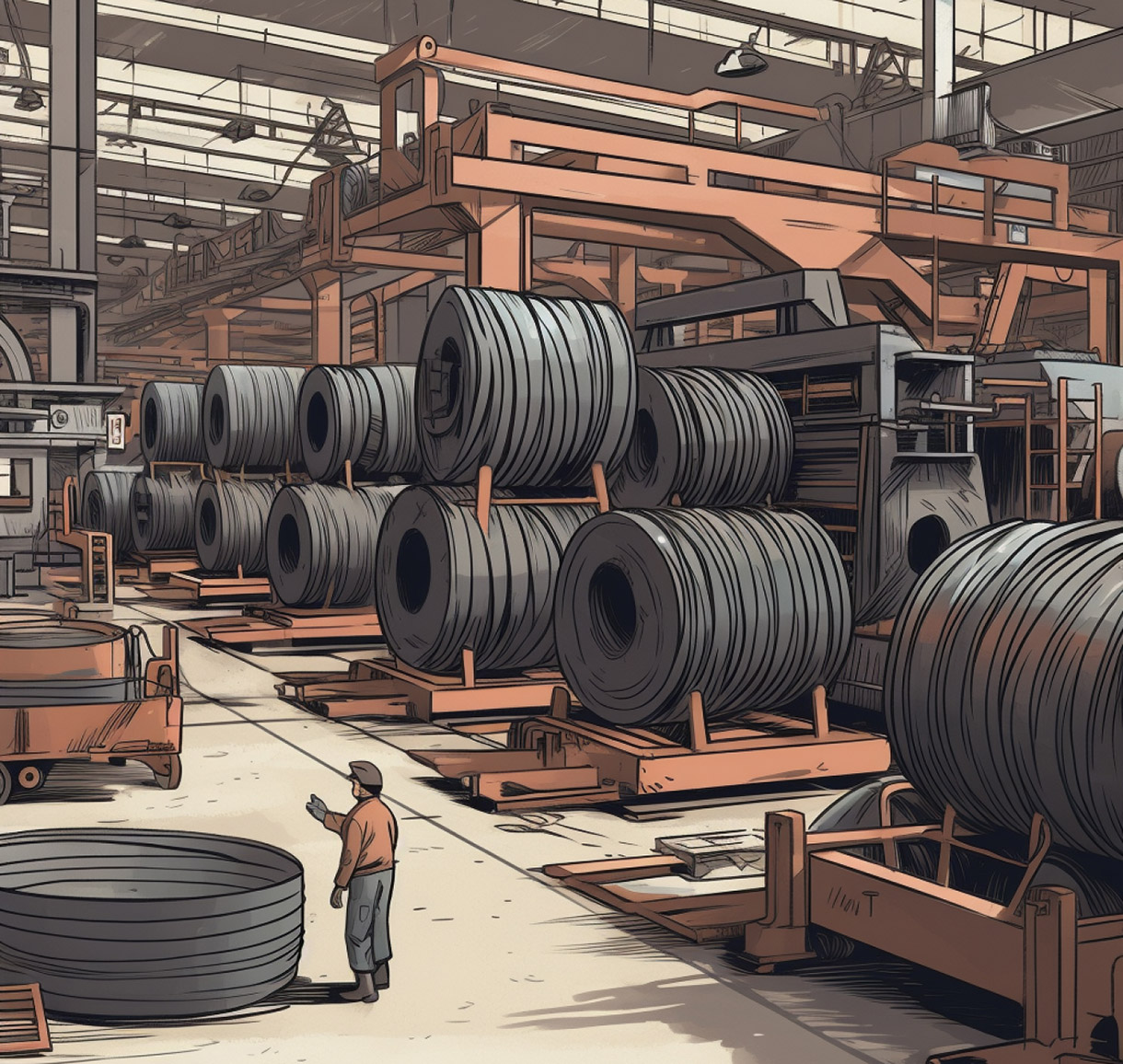Way too often, UX optimization simply involves a superficial touch-up. A nicer design, a more understandable user interface, and the fresh coat of paint is dry. However, especially in highly specialized industries, the problems are often much deeper inside. When processes slow users down instead of supporting them, the entire company’s performance starts to falter
UX research has to go below the surface and start with how the business processes are designed. The example below on software manufacturer PSI Metals demonstrates how this can work.
As a leading provider of product management solutions for the metal industry, the company developes software, that supports, among others, material planners in the metal industry in material to order allocation (MOA). In this highly complex process, the planners are responsible for precisely allocating raw, semi-finished or finished materials to demand for the processing industry while efficiently utilizing the capacity of warehouses and production facilities.

Here, a semi-optimal user experience causes more than just a frustrating “fender-bender.” If materials are not delivered just-in-time and in the desired quality and composition, supply chains come to a halt and productivity is adversely affected. Reason enough for PSI Metals to review the functionality of its existing software and modernize its interface. In addition, the PSI Metals product teams needed to be able to individually track and, where necessary, improve the user experience of their customers.
UX optimization means asking the right questions
In a collaborative workshop on the requirements, die firma’s UX Design and Development team and PSI Metals’ Sales and Product Management teams defined targets and the corresponding measures to be taken. A list of questions we subsequently developed was to be validated in a smoke test with actual users.
However, initial discussions with the planners in their environment soon revealed that giving the user interfaces a facelift would not be sufficient here. Our first observation of users in their work environment made it clear that the challenges went deeper.

The users we interviewed only used the software to a limited extent, such as to obtain data that was combined with Excel spreadsheets or SAP modules developed at great effort by the users themselves.
The structure and design of the software made it a time-consuming task to train new staff members on it. In view of the shortage of skilled workers, this is hardly a desirable scenario. Though to the complexity of the process an appropriate leadning training period is necessary.
The jobs-to-be-done method as a guideline
It quickly became clear to the entire team that if we wanted to develop a good user experience, we had to change our thinking and fully understand this: What are the main tasks that users must perform and what are the obstacles in the process? A questionnaire was developed based on the jobs-to-be-done method, and PSI Metals selected representative users for its respective markets: Europe, Latin America and the USA/Canada.

Together with these users, we walked through the process of efficient material planning on the screen in remote interviews. In the process, we always kept the crucial question in mind: What do customers want to get done, how can they quickly accomplish the desired goal, and what is currently preventing them from doing so?
Based on the needs identified, we developed a job map that outlines the path for efficient material planning step by step from the planners’ point of view, including possible obstacles. For example, there was no possibility of fast and efficient communication between the planner and the product managers on the customer side, such as for inquiries about the material compositions of the metals.

Research findings experienced live!
Understanding starts with experience, which is why we immersed the stakeholders in the experiences of their users when presenting our results by providing the insights from the interviews as quotes and adding short video clips from the recorded sessions. During a group cognitive walkthrough, the stakeholders themselves tried to re-enact and solve the problems identified by the users – and in the process they themselves experienced the obstacles addressed and the context.

This approach not only created empathy for the users, it also helped the entire team prioritize upcoming tasks.
The most urgent task packages were defined to increase productivity and efficiency and, of course, customer satisfaction. Topics that emerged here, for example, included simplifying the filtering and allocation mechanisms, simplifying internal communication for coordination purposes, and onboarding and self-training to enable new employees to quickly become productive.
UX research as a tool for retaining customers
Based on the defined topics and the functional steps defined for them in the research, we developed interactive prototypes with optimized interfaces and click paths.

We also defined indicators in advance that provided comparative values with the original version to measure the extent to which the user experience would change. The results of the retest were incredible.

The users rated how easily they could do the job of “material allocation” using the new application at 6.2 out of 7. By comparison, the old application was given a score of just 4.5 out of 7. In other words, the work was now much easier to do.
The system usability score (SUS) for the new application was 86.9. An application already receives the best grade A (Excellent) at 80.3.
The users estimated that the new application would save them about 1.5 hours each day in completing this task.

The user feedback for the prototype was very good, especially the new click-paths that reflect a more workflow-driven approach. But not only the user experience was significantly better in their perspectives. They also appreciated the interview process and the feeling of being heard and having their needs taken seriously.
Consequently, user research can be viewed as a valuable tool for customer satisfaction, not – as often feared – as an intrusion at the workplace. This was also a valuable learning experience for PSI Metals Product Manager Robert Jaeger, who was involved in the entire process.
In many respects, UX research is an effective means of improving relationships. Provided you ask the right questions, that is.
Don’t be afraid to change your thinking!
Design processes are learning processes, which is why it is important to repeatedly question procedures and adapt them as necessary. Agile methods enable flexible adjustments to the process and provide the necessary transparency to regularly involve all stakeholders.
-
User experience is not just about pretty designs and fairy dust, it extends into interlinked business processes.
-
User-centric optimization means knowing and mapping out the functionality of all relevant process steps.
-
To do this, you need to understand what the users’ main tasks are and what is preventing the users from accomplishing them.
-
User research is beneficial for both sides, not an annoying intrusion at the workplace.
-
Even questions sometimes must be questioned: Are they truly productive in this particular case?
-
Understanding starts with experiencing, so it makes sense to let the product owners experience the pains & gains of their customers as far as possible.
